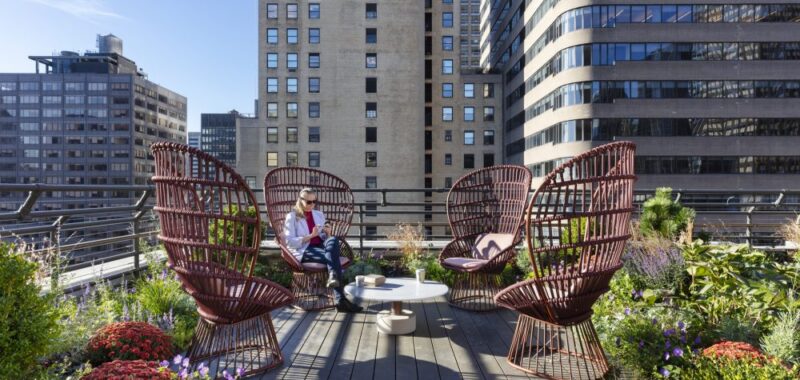Gensler’s Laurent Lisimachio makes the case for outdoor spaces that promote health and wellbeing but maintain productivity levels through seamless integration of natural elements.
What if the best amenity a company can build for their employees is not directly inside the office, but an extension of it – outdoors?
Whether used to host upscale workplace events, de-stress among the natural elements or for a literal breath of fresh air: terraces, balconies, loggia and other spaces that break out of the standard four walls of an office are becoming the standard fare in workplace design. To be effective, though, these spaces must extend the workspace itself. And to be superlative outdoor spaces and more than just a flashy, easy-wear add-on that’s only good for a few fair-weather weeks in spring, it’s crucial to consider the full potential of outdoor areas as spaces that facilitate both work and play, and everything in between.
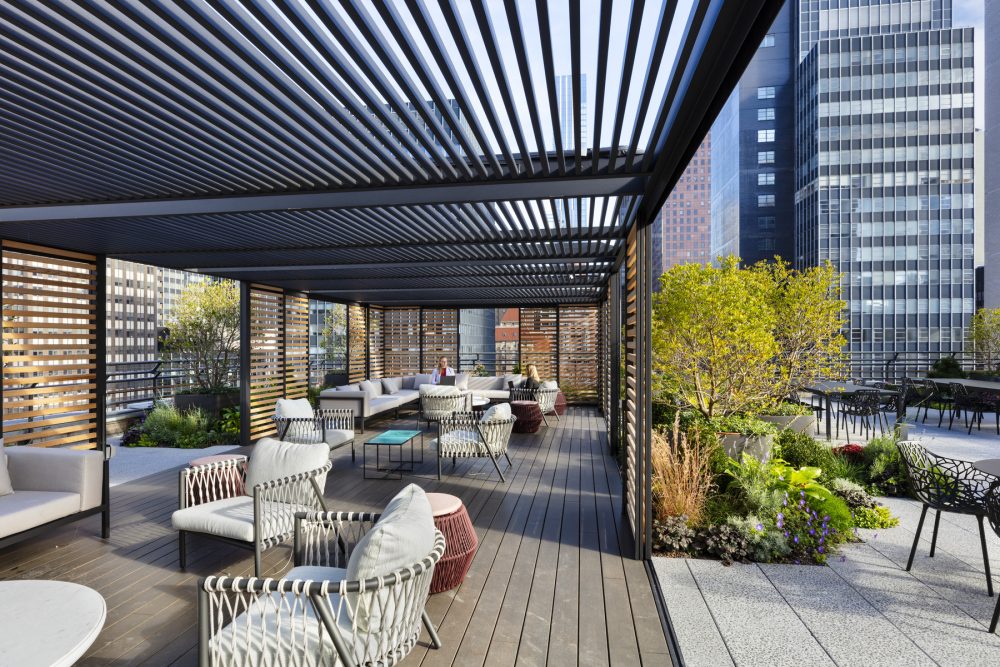
Evolving with the Elements
The usability of outdoor workspaces begins with their primary purpose – to be worked in. Whether to use laptops for Zoom calls, or to read from a screen, the expectation of a pleasant experience could quickly turn unproductive due to too much glare or disruptive weather. Combine that with an increasingly health-conscious population concerned by the dangers of sun exposure, and it becomes clear that comfortable outdoor spaces need to include shaded areas reducing glare and catering to several climates.
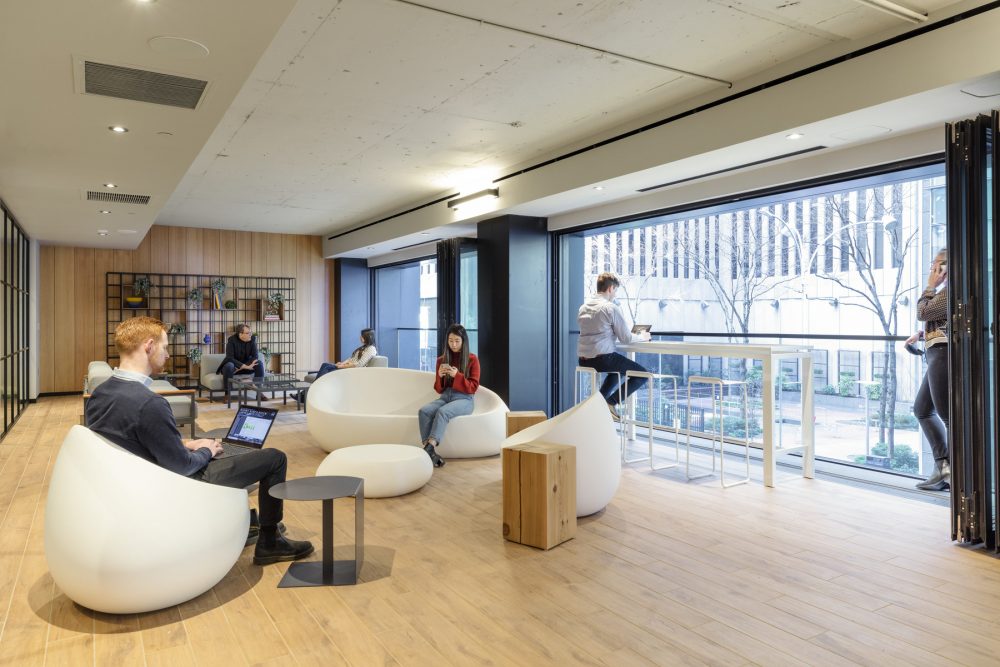
When George Comfort & Sons engaged Gensler for a repositioning project at 135 W 50th Street, an adjacent alley, 6 ½ avenue, was extended to connect to the existing public plazas at 50th and 48th streets. Following this focus on creating easy access to public and outdoor spaces, one of the building highlights is “Club 135,” the second-level amenity floor that facilitates a variety of functions: a place for respite, a flexible conferencing space and a casual workplace or leisure area.
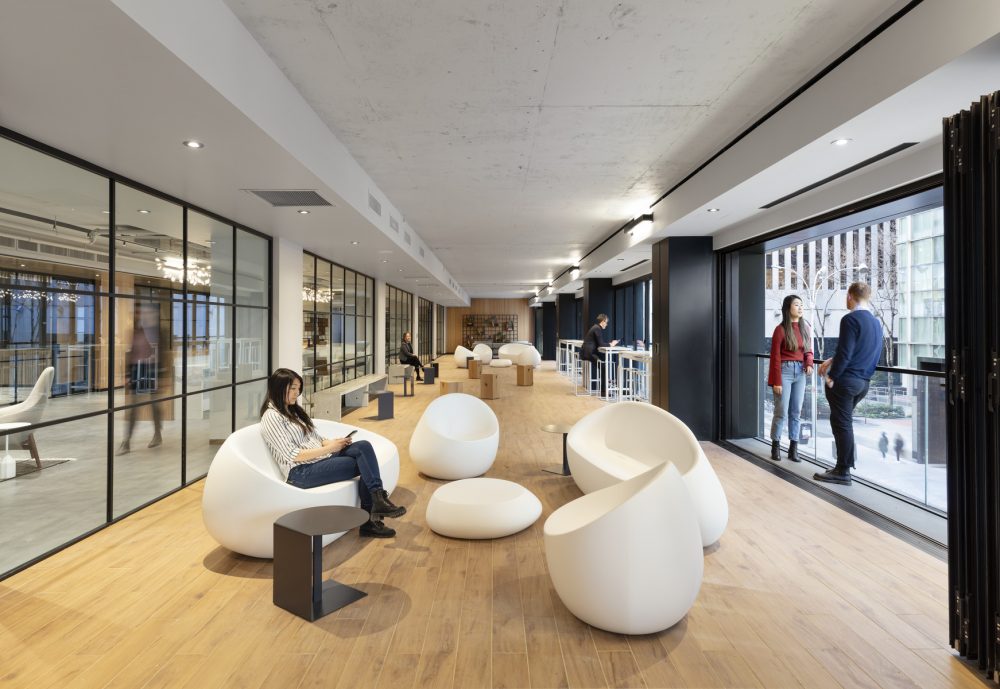
The design team removed the façade to create a semi-outdoor space with a retractable wall system and a covered outdoor space. This convertible indoor/outdoor loggia does two things at once; it serves as a flexible, generous outdoor space with fresh air, and shields its occupants from the elements. As a result, employees of this modernized, multifunctional space can experience the energy of the urban bustle of Midtown Manhattan while going about their workday without the nuisance of a sunburn, or screen glare.
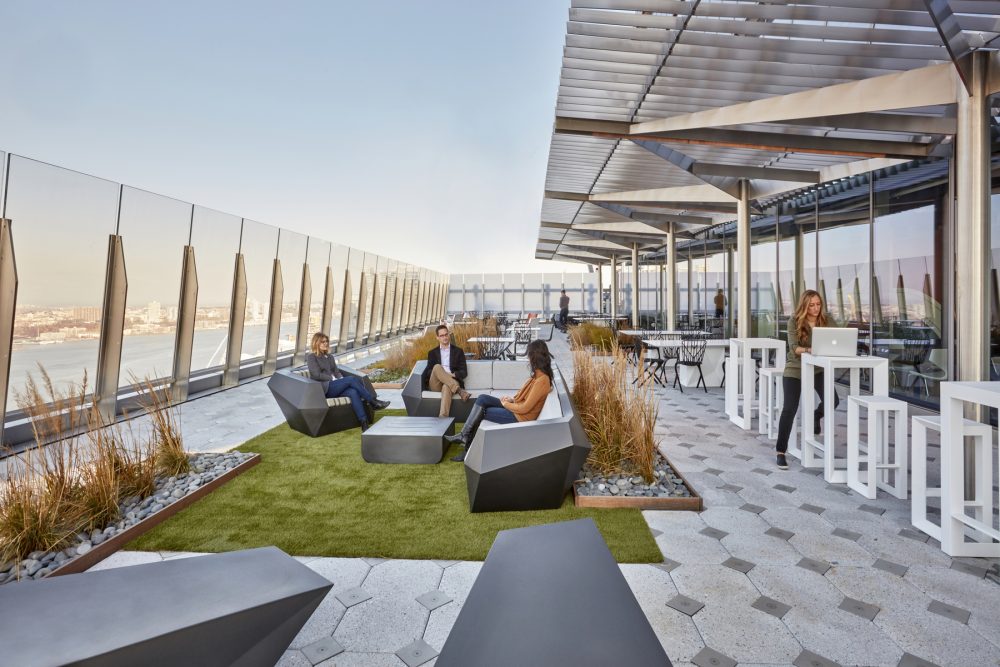
L’Oreal at Hudson Yards, which boasts a high-rise terrace overlooking the Hudson River, also required consideration of environmental factors to ensure remote-work optionality. The terrace combats the high winds with a custom wind screen that extends its use year-round while also helping maintain balanced air pressure inside the adjacent office spaces.

Designing for Resonance
To achieve the restorative (and sometimes meditative) effect employers intend for outdoor spaces to impart on their employees, a design approach that prioritizes nature and ambiance in equal measure is key.

Lupa Systems’ 700 square-foot 7th story terrace overlooking NoHo takes cues from the neighborhood’s storied architecture and fashionable vibe. The space embraces a purposeful vintage feel of the city mixed with a contemporary approach to traditional materials, such as terracotta and reclaimed wood, in an unexpected way. The indoor-outdoor space adjacent to the terrace transforms into a living room for entertaining. To enhance the full spectrum of outdoor experience, lighting is specially designed to be adjusted for nighttime ambience, with after-hours work events in mind. Lit from below the furniture, the light grazes the floor to create a striking silhouette effect.
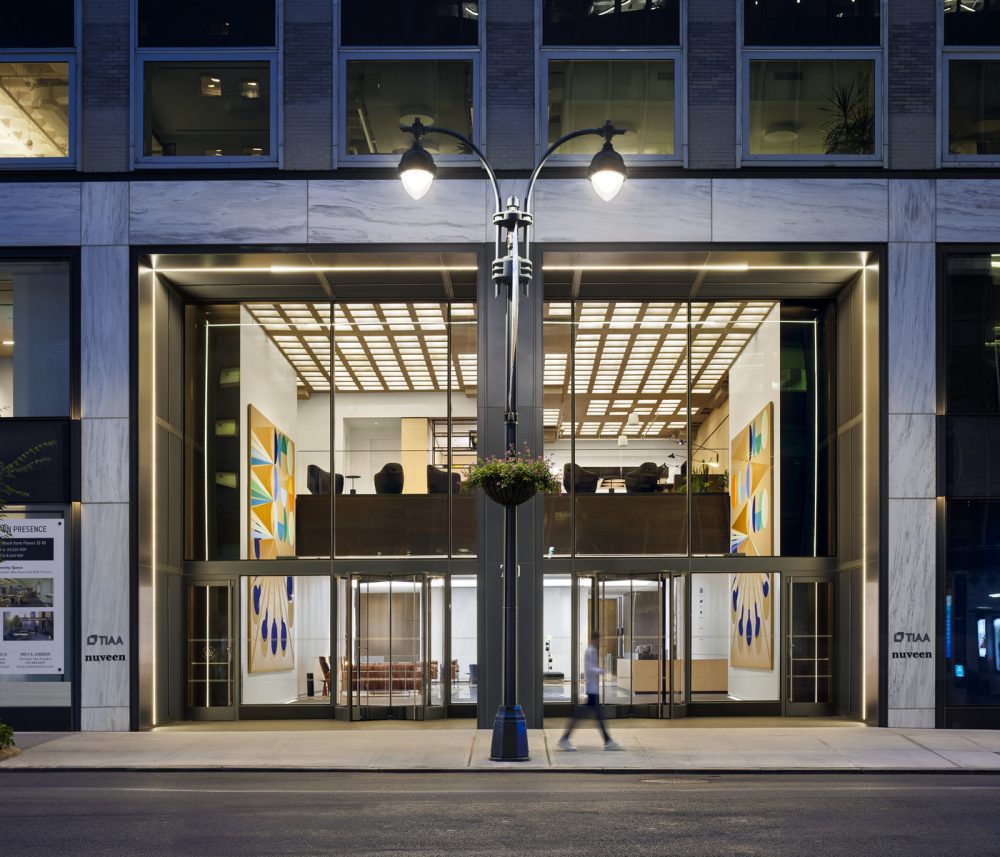
Embracing Biophilia – Outdoors
In recent years, biophilic design principles have redefined workplace interior design. As these principles take root more widely, their influence is spreading outdoors.
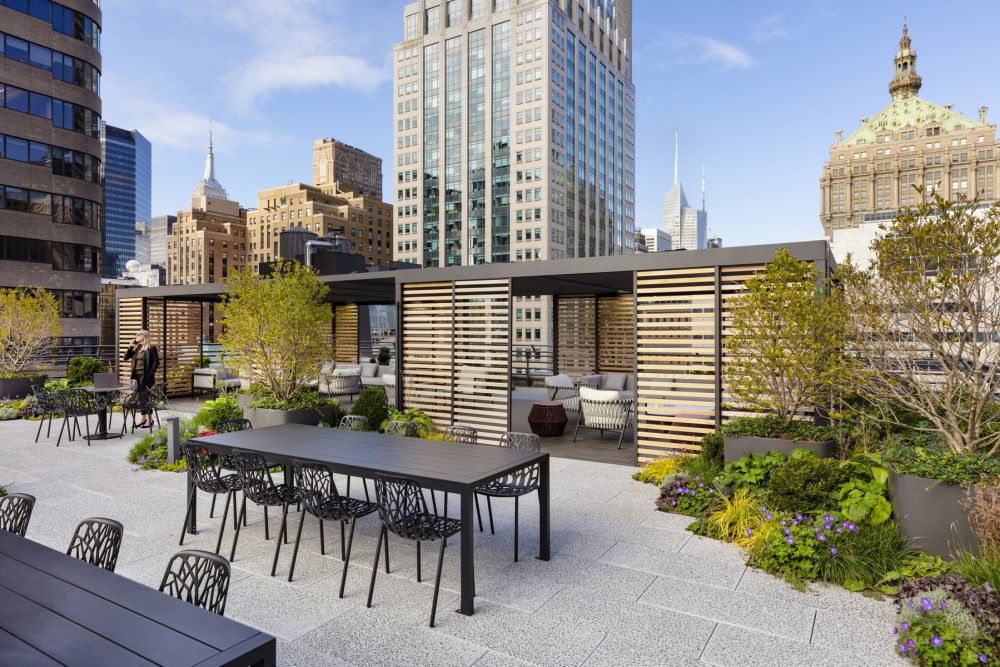
Biophilic design acknowledges that humans are intrinsically drawn to the natural outside world, where workplaces infused with natural elements improve overall employee health. Greenspaces, natural light and fresh air are proven to lower stress, improve cognitive function and enhance overall mood and creativity. The design of 730 Third Avenue’s 22nd floor terrace balances the concrete hardscape of the city skyline; biophilic planters surround employees working on the rooftop terrace, facilitating access to a variety of microclimates that produce restorative experiences through small pockets of nature and consistent access to natural light.
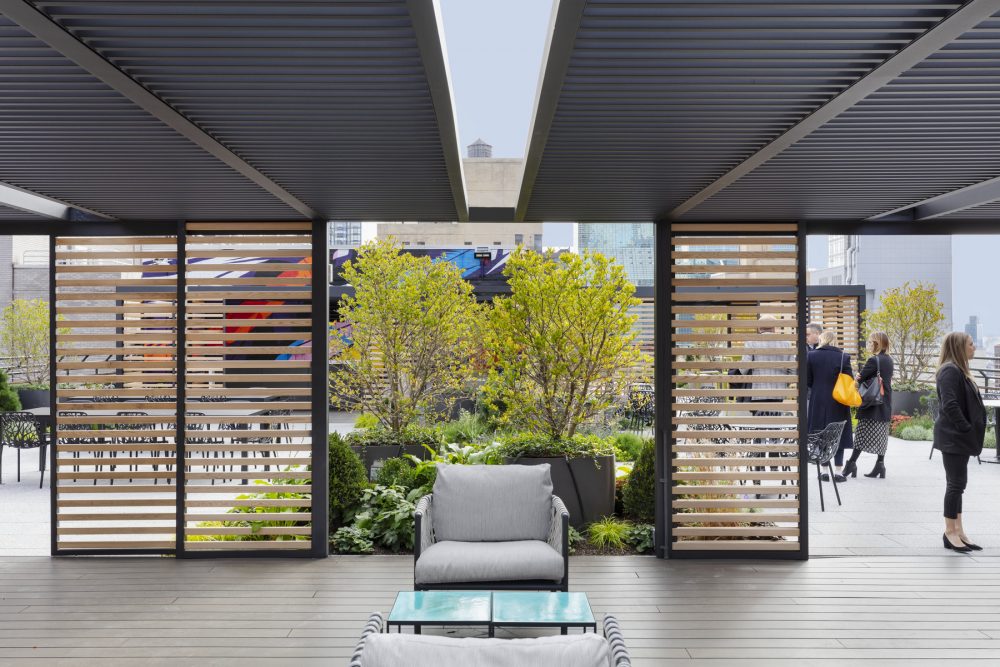
Once a hallmark of exclusivity – or, conversely, a forgotten space only used for cooling tanks and MEP rooms – the rooftop has become a hallmark office amenity. With the demand for revitalized workplaces showing no signs of slowing down, intentional consideration of the connection between the interior workplace and its exterior terrace expands its potential to provide truly dynamic spaces that facilitate employee productivity. Thoughtfully designed outdoor spaces can introduce variety into the employee’s workday without sacrificing ideal work conditions, creating new reasons for coworkers to collaborate while being immersed in nature or their surrounding neighborhood.

